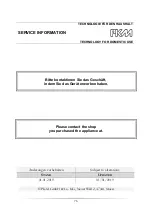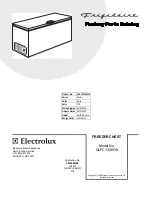
65
WARNUNG
Do not touch extremely cooled surfaces with wet or damp hands,
because your skin may stick on these surfaces.
4.7 Storage of food
Your appliance has the accessories as the “Description of the appliance” showed in
general, with this part instruction you can have the right way to storage your food.
Food is not allowed to touch directly all surfaces inside the appliance. It has to be
wrapped separately in aluminium sheet or in cellophane sheet or in airtight plastic
boxes.
Storing food in the refrigerator compartment
The fridge freezer compartment helps to extend the storage times of fresh
perishable foods.
Fresh food care for best results:
Store foods that are very fresh and of good quality.
Ensure that food is well wrapped or covered before it is stored. This will prevent
food from dehydrating, deteriorating in colour or losing taste and will help maintain
freshness. It will also prevent odour transfer. Vegetables and fruit need not be
wrapped if they are stored in the vegetable container of the fridge compartment.
Make sure that strong smelling foods are wrapped or covered and stored away
from foods such as butter, milk and cream which can be tainted by strong odours.
Cool hot foods down before placing them in the fridge compartment.
Dairy foods and eggs
Most pre-packed dairy foods have a recommended „use by /best before/best by/
date stamped on them. Store them in the fridge compartment and use within the
recommended time.
Butter can become tainted by strong smelling foods so it is best stored in a sealed
container.
Eggs should be stored in the fridge compartment.
Red meat
Place fresh red meat on a plate and loosely cover with waxed paper, plastic wrap or
foil.
Store cooked and raw meat on separate plates. This will prevent any juice lost from
the raw meat from contaminating the cooked product.
Poultry
Fresh whole birds should be rinsed inside and out with cold running water, dried
and placed on a plate. Cover loosely with plastic wrap or foil.












































